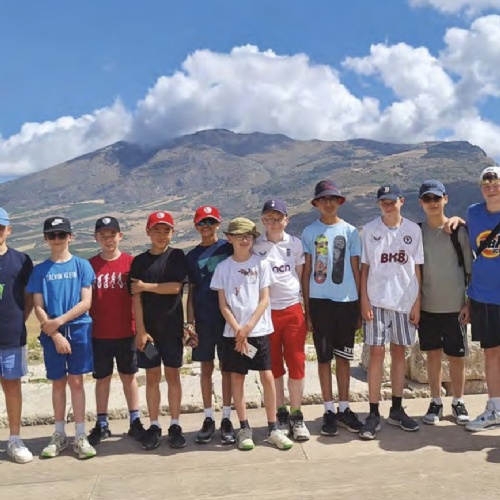Sicily

Sicily is an island with a remarkable history, from the Iron Age to the present day, with Greeks, Romans, Vandals, Byzantines, Arabs, Normans, Angevins and Aragonese along the way. The Year 8 leavers got to learn about this history and experience the remarkable cultural legacy that has been left over centuries by the island’s different rulers.
In Monreale, the boys got to see the Arab-Norman duomo, founded in 1172 and famous for its incredible gold mosaics. In the capital, Palermo, they wandered around the old town to see the Middle Eastern influence on the architecture, alongside some wonderful fading Baroque churches. (They also got to see some of the effects of the devastation wrought on Sicily during World War II.) One of the highlights was a trip to the amphitheatre on Mount Barbaro in Segesta, dating to the Greek period, and still in use today. The boys may have tried out their Henry IV, Part 1 lines on the stage! Not far from Segesta is Selinunte, known as the ‘Greek Pompeii’ for its archaeological preservation of a city sacked by a Carthaginian army of 100,000 soldiers.
Similar to Segesta was the ‘Valley of the Temples’ in Agrigento, a World Heritage Site consisting of seven of the best-preserved temples in the Mediterranean. A bit closer to the modern day, the Baroque town of Noto provided a welcome backdrop to some gelati eating, and introduced the boys to what can happen if you rebuild much of a city all at once, with a singular eye on the more elaborate elements of an architectural style. If all of the above wasn’t enough, we also visited the archaeological park at Siracusa and the beautiful island of Ortigia. To bring things up to today, the boys of course got to enjoy what brings lots of visitors to Sicily: its beaches and food!
